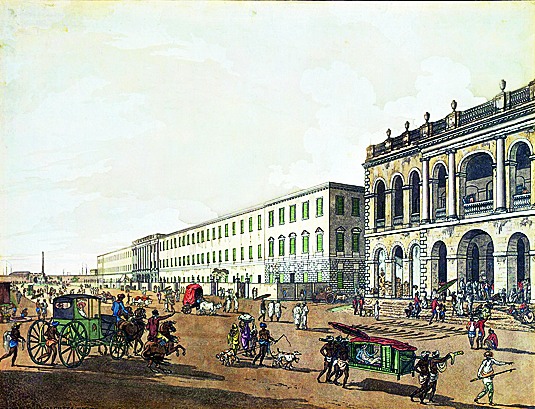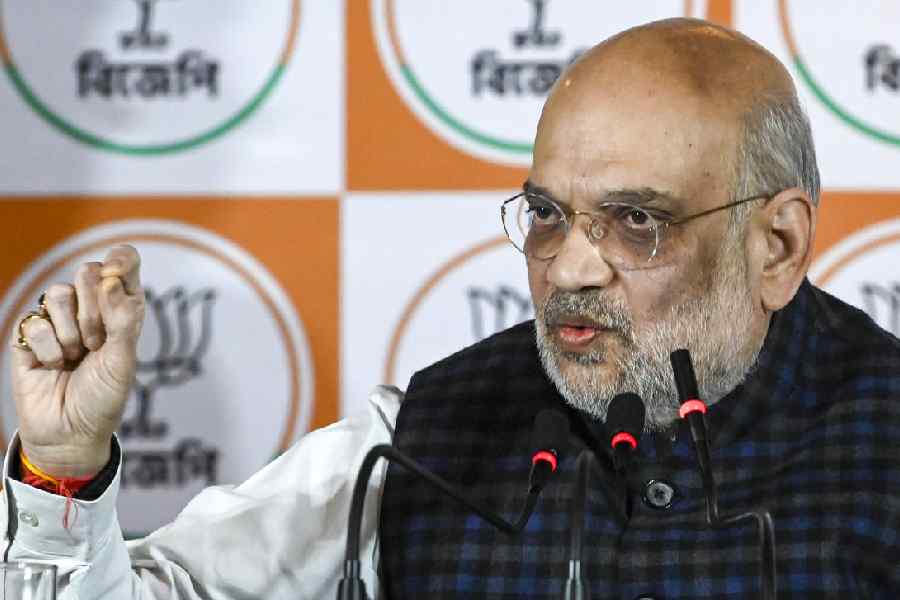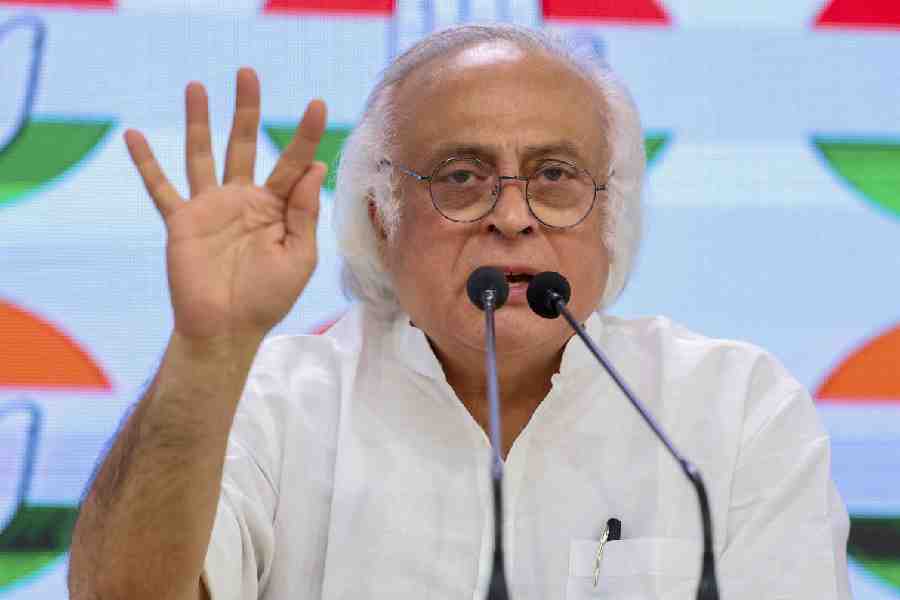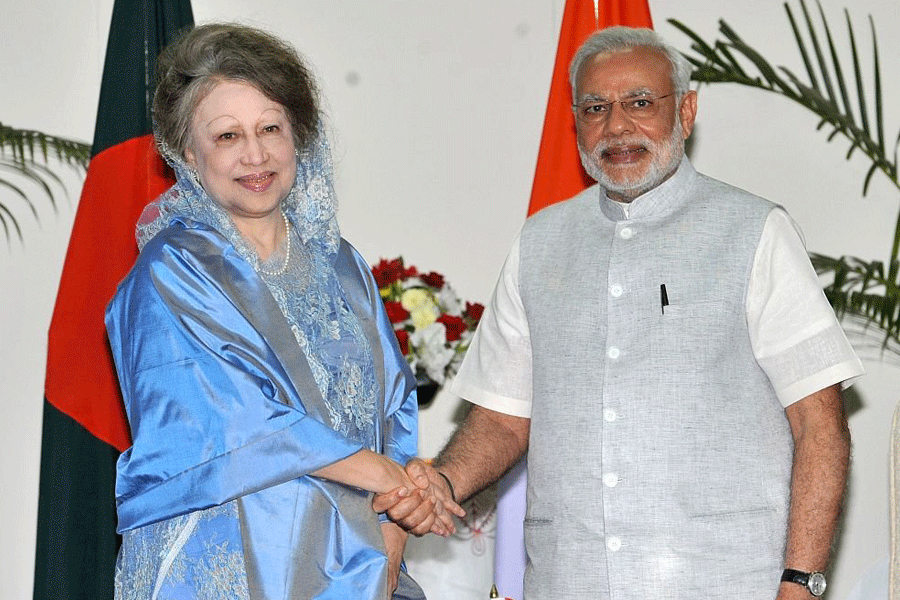
Designed in 1777 by Thomas Lyon, the Writers' Buildings was erected to house the many clerks or 'writers' needed by the East India Company to write, process, and file documents relating to its rapidly expanding commercial activities. Back then, the notion of a large central office was itself a relatively new concept, as was the building designed expressly for this purpose. At the time of its completion in 1780, the Writers' Buildings is believed to have been the first three-floor construction in Calcutta. The simple structure occupied one side of what was then called Tank Square. It housed 19 residential quarters, each with three sets of windows, and was not the imposing Writers' Buildings we know today.
The clerks in those days conducted their official duties using quills on parchment - as was the custom in Europe. Quills may first have been used in Seville, Spain, and remained the primary writing instrument until the 19th century. The very word for pen comes from the Latin word ' penna' - or feather. These pens were made mostly from goose feathers. A strong feather would be dried in hot sand, its exterior membrane removed, and the remaining tubular structure hardened by dipping it in acid to make the quill point stronger and more durable. A penknife would give the quill its point. When the quill lost its edge, a new one would have to be used.
The clerks would write by dipping their quills into ink. Ink itself was first used for writing in ancient Egypt and China. In the Writers' Buildings of yore, the ink would be poured into ceramic pots fitted into holes on the top right corner of the wooden desks. These pots were designed so that the writer could release extra ink from the nib by hitting it on the side of the pot. Peons would replenish the ink, in both black and red. Black ink was used for ordinary writing, while red ink was used for underlining as well as for maintaining accounts. Each quill held enough ink to write two or three words before it made a blot, which would be absorbed by blotters. A blotter was an instrument with a half circle of blotting paper attached to its base. It was used to dry a large area of the written page.
In 1800, Fort William College was established to train the writers in Oriental languages. It moved to the Writers' Buildings, and structural changes were made to the building to include a hostel for 32 students, an examination hall, four libraries, and rooms in which Hindi and Persian were taught. In the early 19th century, the unseemliness of the Writers' Buildings was of concern to Lord Valentia, who took it upon himself to write to the directors of the East India Company about his aspirations for the building. He and his compatriots felt that India should be ruled "from a palace, not a counting house; with the ideas of a Prince, not with those of a retail dealer in muslins and indigo". In 1821, a 128-foot verandah and six Ionic columns - each 32 feet in length - were added to the first and second floors of the building.
As changes were being made to the building's exterior, slow but steady changes were occurring in keeping with the new writing technologies available. By 1803, a metal pen point had been patented to replace the quill. In 1822, John Mitchell set up a factory in Birmingham to manufacture steel nibs. His machines stamped out steel nib forms that had a lateral curve. The nib was split lengthways to form a channel and a small reservoir for ink. By the 1850s, this innovation became affordable and widespread, and writers replaced their quills with metal nibs; these held enough ink for a complete sentence without blotting. This steel nib was originally attached to a holder, which was soon exchanged for the reservoir pen.
The Writers' Buildings kept expanding to meet the needs of Empire. Between 1877 and 1906, five blocks were added to the structure. The building was given its Greco-Roman look, a portico in its central bay, and a red brick exposed surface. In 1883, William Frederick Woodington sculpted the imperial statues which line the terrace. It was during this time of rapid growth to the building that the first fountain pens were being developed. These writing devices had an ink chamber and a delivery system in the handle of the pen. Around the same time that the pen was being perfected, the manual typewriter was being patented. In 1868, the first typewriter to be commercially successful was invented in the United States of America. It is said to have looked "something like a cross between a piano and a kitchen table". In 1873, the Remington Company began producing a typewriter with a unique keyboard design that became standardized by about 1910.
The typewriter also went through several design innovations. The most notable was the shift from having a separate key and typebar for upper case letters that required the typewriter to have two keyboards, one above the other. The shift key allowed the typebar to type two different characters, reducing by half the number of keys and typebars to allow letter keys to type both upper- and lower-case letters. These features led to the mass adoption of the technology. By the early 20th century, in spite of being quite expensive, a typewriter was becoming standard equipment in offices - including the Writers' Buildings.
As the pace of writing innovations rapidly increased, so did the building. Four new blocks were added to it between 1945 and 1947, and another set of four blocks was added post-Independence. The writer's old instruments - the quills, inkpots, ink, and blotters - were no longer needed by the army of clerks who worked there. Manual typewriters gradually gave way to electric typewriters, although many old Calcutta offices and self-employed street typists still use the former. Following the onset of the computer revolution in the 1970s, the instruments once essential to the writer's craft have been swept aside.
Since 2013, the Writers' Buildings has been undergoing a major Rs 200-crore renovation headed by Madhumita Roy, who is on lien from Jadavpur University's department of architecture. Reportedly, she is still working on the remodelling of the building. The extensions built during the post-Independence period have been deemed non-heritage structures and are being removed. Some of the upper floors are being demolished, but there are concerns that some heritage structures have been damaged in the process. Recent newspaper reports indicate that the attempted renovation seems to have all but stalled, and there is no time frame in place for when we can expect to see it completed.
This historic colonial structure is slated to become a green building. Energy-efficient and environmentally friendly technologies, such as water harvesting and solar panels, are to be incorporated, and ample light and air will enter the building. Its interior office spaces will, probably, be entirely digitized. Most likely, they will still house the documents and files of bygone years. These yellowed pages will remind us of when, just two hundred years ago, the clerks of the East India Company were still writing with their quills, ink, and blotting instruments.











